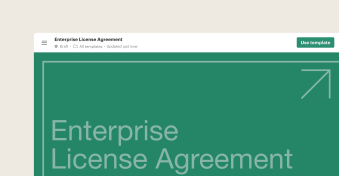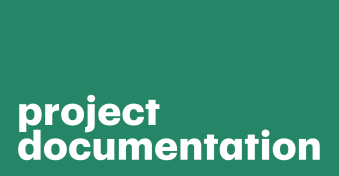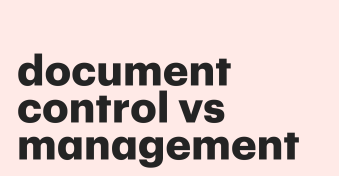Once a project gains momentum, it can be challenging to maintain the same focus you had at its beginning.
Deliverables miss deadlines, objectives are overlooked, and the scope broadens.
Enter the project initiation document (or PID), which can help cure you of many of the most common project missteps and pitfalls.
Key takeaways
- A project initiation document outlines vital project information and parameters, including objectives, success criteria, and timelines.
- Project initiation documents are more detailed and comprehensive than project briefs or proposals.
- A PID is a living document that helps you gain buy-in and can be used as reference material throughout the project’s duration.
- Good document management software can streamline creating, accessing, and editing your PIDs and other project-related documents.
What is a PID in project management
A PID is a part of project planning before the project begins. It outlines its purpose, success criteria, timelines, and risk analysis.
PIDs serve as a roadmap for all those involved in a project. They’re also living documents.
What we mean by this is that they should be continually updated as your project progresses.
When you bring new team members, a PID can help bring them up to speed, allowing them to hit the ground running.
Businesses that use PIDs typically follow the PRINCE2 methodology.
This acronym stands for “projects in controlled environments”. (PRINCE2 is a practitioner certification program adopted by organizations in the UK, Western Europe, and elsewhere.)
What’s the difference between a project brief and a PID
A PID and a project brief are similar in that they outline what will happen as part of a project before it commences.
However, they’re still two different documents with separate purposes.
A project proposal or brief is a concise document providing a high-level overview.
This includes covering ground such as objectives, scope, and purpose.
Teams prepare these documents to get buy-in and approval from key stakeholders.
An initiation document is much more detailed.
Besides providing an overview, it outlines potential risks, costs, and benefits.
It offers a more comprehensive definition of the project’s scope, too.
Defining specific areas outside the project is common to avoid any confusion among stakeholders.
A PID helps you get initial approval; at the same time, it’s also used as a detailed guide for team members during the project lifecycle.
In contrast, a project brief will likely have fallen by the wayside when the ball starts rolling.
Why not read our project proposal guide to help you write a brief that sells?
What are the benefits of a project initiation document
There are many benefits to using PIDs for project managers.
These include:
- Tried and trusted. Practitioners around the globe use this approach. Ergo, you’re following a proven and effective methodology throughout the execution of your project.
- Clarity and direction from the start. PIDs also align team members and stakeholders by providing clear project guidelines.
- A handy reference document. On that note, team members can often seek guidance or independently answer questions simply by consulting the PID when unsure.
- Focused decision-making. A PID also helps managers make informed decisions that align with the project’s purpose.
- Better customization. A PID framework is a flexible living document. You can easily alter and adjust planning and implementation details as required to suit the needs of your team and business.
- Useful for monitoring and control. You also have a baseline for performance metrics, timelines, and scope. An effective PID can help you identify and correct your course should you lose focus or stray beyond the bounds of the project.
- Helpful in gaining project approval. This is a comprehensive document that defines many crucial project details. Ergo, a PID can streamline the approval process for decision-makers and board members.
- Communication and collaboration. The document should also map out who’s responsible for completing and approving tasks. This means team members always know who should be doing what and who’s reporting to whom.
- Handy for onboarding new project members. Additionally, a PID provides a detailed project overview to help new team members get started quickly.
- It streamlines other project paperwork. Finally, writing a PID makes generating contracts and a statement of work for your project easy, as you know all the essential details before you embark on it.
What should be included in a project initiation document
PIDs must cover a project’s purpose and outline the criteria for success.
However, this is a comprehensive document, so you’ll also need to include the following as a minimum:
- A table of contents. This handy section should help users find exactly what they’re looking for.
- The project’s purpose. What’s the point of the project? What will it achieve for the business?
- Objectives, i.e. specific outcomes. For example, to decrease contract execution time.
- Its scope. What lies within the project’s boundaries? This includes types of work, departments, geographical regions, and client or customer segments.
- Deliverables. What are you expecting to deliver, and how? Define details such as the metrics used, milestones, and deadlines.
- Milestones. Identify what steps or measured achievements will constitute definitive progress.
- Roles and responsibilities. Who will oversee the project, and what teams or departments are involved? Who will be responsible for various tasks and milestones?
- A risk assessment. What are the potential risks involved in the project? Which of these could potentially derail it?
- Risk mitigation. Define the processes and systems to reduce or eliminate these project risks.
- A communication plan. Detail how project updates will be reported. Decide on check-in frequency and identify which stakeholders will be involved in which areas of communication.
- A resourcing strategy. Include a project breakdown structure or resource allocation plan. Outline what resources are available for what task and for how long.
- Constraints. What are the practical limitations or restrictions of the project? How will these affect performance and deliverability?
- Key stakeholders. Who’ll be most involved and affected by the project? Who’s expected to contribute, and in what capacity?
- The project budget. i.e. the estimated costs. Include all overheads and financial expenses, such as outsourcing or consulting fees. Outline how you’ll respond if the project is heading over budget.
How to create a project initiation document in eight easy steps
A PID can help your next project run smoothly and ensure you’re adequately prepared from start to finish.
But how exactly do you create this sort of document?
By following these simple steps:
1. Gather project information
The first step to creating a PID is gathering the necessary details.
Who’s the client, and why are they pursuing the project?
Likewise, why is your company handling it? What expertise and performance history are you bringing to it?
Next, identify whether your team is capable of completing it.
There should be a clear alignment between the goals and needs of all stakeholders, including the client.
Other questions to consider are:
- What’s the aim of the project?
- How does it relate to your business goals?
- How does the client define and measure success?
- What areas of the business are most closely related to the project?
2. Define project parameters
Now it’s time to get into the nitty-gritty and lay out transparent boundaries and guidelines.
This includes project constraints, such as budget, time, personnel, or other resources.
Provide a stakeholder analysis to outline the key players. Include other information in this section, too, such as:
- The project timeline
- Client collaboration expectations
- The primary target or milestones
- A budget
- Deadlines for deliverables
3. Scope and requirements
Projects lose efficiency when they go beyond their original scope.
So, clearly define deliverables and how they’ll be judged for completion.
Outline the requirements of the project, including:
- Financial costs
- Stakeholders
- Team members involved
- Risk management and prevention
- Progress monitoring
When writing out project parameters, you’ll likely have crossover information for your business requirements document (BRD).
With project initiation document software, like PandaDoc, you can easily work on both docs simultaneously.
4. Define project breakdown structure
It’s time to pair your project parameters with requirements and constraints.
In other words, how can the project be broken down into stages for a waterfall approach?
A work breakdown structure is a rough plan that highlights dependencies and deliverables.
This helps give greater context to each individual involved with the project.
Get input from stakeholders and team members while putting this together.
Their knowledge and expertise will help you spot inefficiencies and optimize planning.
5. Create a project personnel chart
A project breakdown gives a bird’s eye view of workflows and deadlines—but who’s monitoring who?
And who are various individuals reporting to? You can’t field every question or micro-manage every assignment as a project manager.
Luckily, a RACI chart has everything you need. RACI stands for:
- Responsible
- Accountable
- Consulted
- Informed
This simple matrix can be referenced by everyone on the project. A quick look shows them who to communicate with and who’s accountable for what.
You can even color-code each category for better clarification.
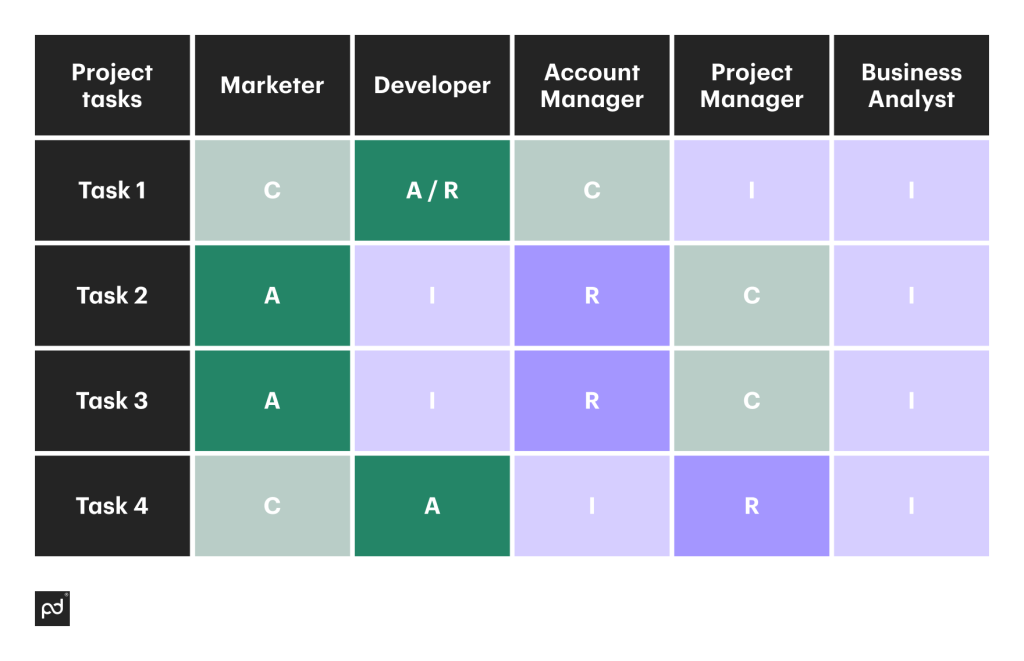
Alternatively, take inspiration from your organizational chart. You know, that visual depiction you have of your entire business’s workflows?
Make a project-based version. This gives your team a simpler communication guide when working on it.
6. Identify risks, assumptions, and dependencies
By now, you have a winning project. However, it’s time to focus on constraints and other potential issues.
Get your managers and subject matter experts together to identify and define risks. By anticipating these, you can map out preventative measures.
Next, plan how to deal with risks that manifest as real problems.
These could be technical unknowns, single points of failure, or highly complex dependencies.
Also, take key stakeholders’ feedback on your project’s parameters and scope.
You may discover a particular timeline or budget is unrealistic.
Spotting issues and constraints will allow you to re-strategize and optimize your project plan.
7. Write the PID
It should be mentioned that all your work up to this point ought to have been going into a rough draft of your document.
Now, it’s time to put all that information gathering and input into action.
Be sure to write an accurate and informative PID, including all the aforementioned sections.
You can save time with document management software like PandaDoc.
Besides templates, our platform lets you work on a live project initiation document from day one.
You can start working on this during your information-gathering phase.
Then, update the document with these every time you have new planning details.
Once the project launches, return to your PID to update it anytime.
8. Share the PID
Last but not least, share the PID with all relevant parties.
Stakeholders, decision-makers, clients, and those working on the project should have easy access to this documentation.
A digital document-sharing solution can provide real-time access throughout the project lifecycle.
With PandaDoc, for example, you can share all projects, business, and legal documents in one space, saving your team time and helping them hit their deadlines.
Top project initiation documentation techniques
When creating your PID, follow these best practices.
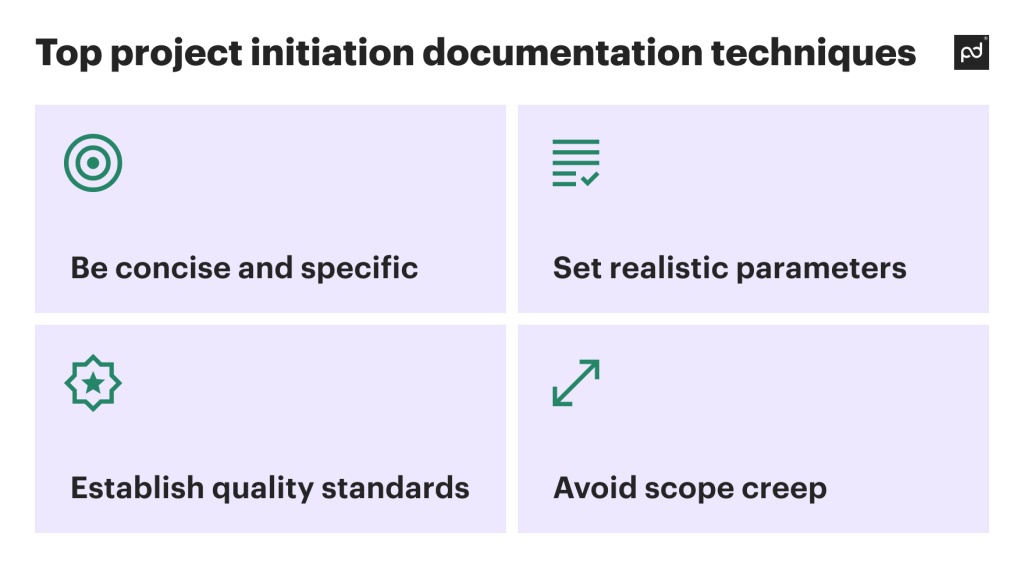
Be concise and specific
A PID isn’t a legal document or contract, and the goal isn’t to obfuscate but to clarify. Don’t use complicated terms unnecessarily.
Instead, lay out the specifics for project deliverables, scope, deadlines, constraints, and other aspects.
Less is more when it comes to objectives and success criteria.
Set realistic parameters
Parameters such as budget, timelines, and communication plans must reside within reality.
If you start with a near-impossible deadline, you’re wasting everyone’s time.
Be honest with the client and your team if something looks too good to be true.
While writing your PID, work with client expectations to develop a winnable project.
Establish quality standards
Specific deliverables and reporting protocols aren’t enough to ensure sufficient quality standards.
So, work with your team to define quality assessment criteria for each project facet.
What are the tolerance levels for task completion? What happens when something isn’t up to standard?
Answer these questions to ensure the client receives a quality product at the end of the project.
Avoid scope creep
Scope creep can affect the best of us. Most PMs watch for infractions throughout a project’s duration—but what about during initiation?
Pay heed to your initially agreed-upon scope during PID creation.
As you progress through document completion, ensure scope creep hasn’t inserted itself before the project begins.
Why should you use a project initiation document template
A project initiation document template is an excellent tool for project managers and planners.
Here are some reasons to use a PID template:
- Consistency. Doing so maintains a level of consistency for every PID project.
- Streamlined PID generation. A project initiation template can help managers quickly navigate the document creation process.
- Flexibility. A well-structured PID can be adapted and customized to fit any client or project.
- Eliminates errors and oversights. Follow and complete each section in the form to ensure you never leave anything out.
Project initiation document examples
Before a project can officially start, you should be armed with a plan.
A PID, project proposal, statement of work, and other project initiation forms ensure your project doesn’t go off the rails.
Here’s what an example of a project initiation document might look like:
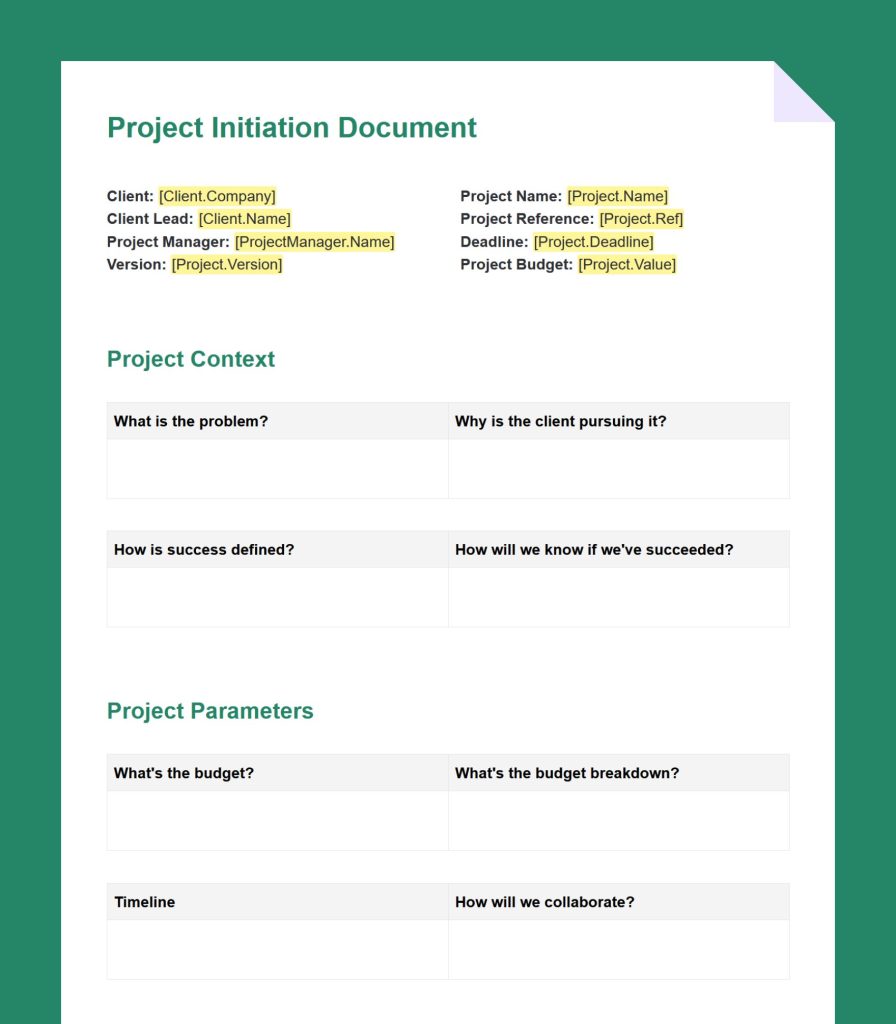
Create a project initiation document entirely from scratch using PandaDoc’s in-app document editor
Write a PID template before you start your next project and reap the benefits.
Document management software from PandaDoc makes project initiation document generation a breeze.
Create a bespoke PID document that fits the needs of your business and clients.
You can also download our free project management plan template to start immediately.
Disclaimer
PandaDoc is not a law firm, or a substitute for an attorney or law firm. This page is not intended to and does not provide legal advice. Should you have legal questions on the validity of e-signatures or digital signatures and the enforceability thereof, please consult with an attorney or law firm. Use of PandaDoc services are governed by our Terms of Use and Privacy Policy.
